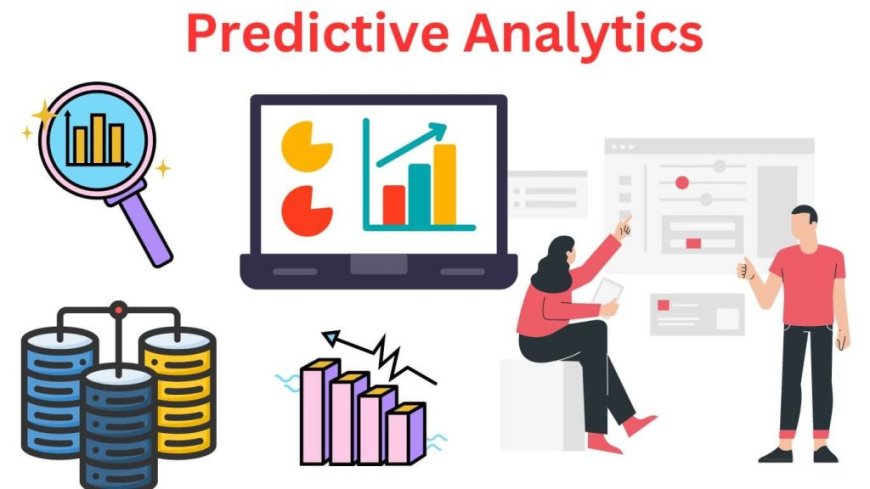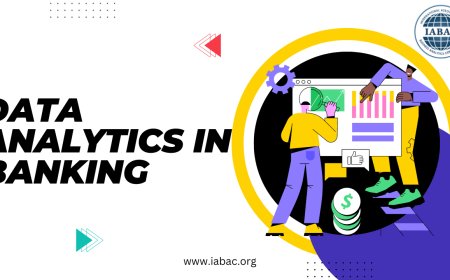The Role of Predictive Analytics in Decision Making
Explore the significance of predictive analytics in decision-making. Learn how data-driven insights and forecasting techniques empower businesses to make informed choices. Discover the transformative potential of predictive analytics.

Organizations constantly seek ways to gain a competitive edge and make informed decisions. This is where predictive analytics comes into play. Predictive analytics is a powerful tool that enables organizations to uncover patterns, forecast trends, and make accurate predictions about future outcomes. By leveraging historical data and employing sophisticated algorithms, predictive analytics provides valuable insights that aid decision-making processes. From finance to marketing to healthcare, businesses across various industries harness the power of predictive analytics to drive growth and optimize their operations.
Evolution of Decision-Making: A Historical Tech Perspective
The evolution of decision-making, viewed through a historical tech perspective, showcases a transformative journey driven by technological advancements. In earlier eras, decisions were often made based on limited data and intuition. The advent of computers marked a significant shift, enabling the processing of larger datasets.
The development of databases and spreadsheets streamlined information management, fostering more informed decision-making. Subsequently, the internet and connectivity allowed for real-time access to data, further accelerating the decision-making process. The integration of artificial intelligence and machine learning in recent decades has revolutionized decision-making by enabling predictive analytics.
This evolution reflects a trajectory from manual, intuition-based decisions to data-driven, technologically augmented strategies. Today, decision-makers leverage sophisticated algorithms and predictive models to anticipate outcomes and optimize choices, emphasizing the profound impact of technology on the decision-making landscape.
Decision-Making Pitfalls: The Absence of Predictive Analytics
Dominated by data, the absence of predictive analytics poses significant challenges and complexities in decision-making processes. Relying solely on intuition or traditional methods exposes organizations to inherent limitations and risks. Intuition, while valuable, is subjective and influenced by biases, potentially leading to suboptimal decisions. Traditional decision-making approaches may lack the agility and foresight required in today's rapidly evolving business environment.
The decisions made without the aid of predictive analytics are palpable. Instances abound where organizations have faced unforeseen consequences due to a lack of data-driven insights. Whether in finance, healthcare, or marketing, hindsight often reveals missed opportunities or catastrophic missteps that could have been averted with the integration of predictive analytics. The absence of a forward-looking, analytical approach may result in poor resource allocation, flawed strategic planning, and an inability to adapt to changing market dynamics.
As industries become increasingly interconnected and reliant on data, acknowledging and addressing these decision-making pitfalls is paramount. Embracing predictive analytics not only mitigates risks but also empowers organizations to make informed, proactive decisions that can shape a more resilient and successful future. The imperative lies in recognizing the transformative potential of predictive analytics as a linchpin in contemporary decision-making paradigms.
How does predictive analytics enhance decision-making processes?
Predictive analytics leverages statistical algorithms, machine learning, and data mining to analyze historical data, identify patterns, and predict future outcomes. This transformative technology enhances decision-making processes in several ways:
Data-Driven Insights: Predictive analytics sifts through vast datasets to uncover hidden patterns and trends, providing decision-makers with valuable insights. This data-driven approach allows for more informed and objective decision-making.
Risk Mitigation: By anticipating potential outcomes and identifying risks, predictive analytics empowers decision-makers to proactively mitigate challenges. This proactive risk management can prevent costly errors and enhance the overall resilience of strategies.
Improved Accuracy: Unlike traditional decision-making methods that rely heavily on intuition, predictive analytics introduces a level of precision by quantifying uncertainties and predicting outcomes with a higher degree of accuracy. This precision minimizes the margin for error in decision-making.
Enhanced Efficiency: Predictive analytics automates the analysis of large datasets, reducing the time and effort required for decision-making. This efficiency allows organizations to respond swiftly to dynamic conditions and make timely decisions.
Personalization and Targeting: In business and marketing, predictive analytics enables personalized recommendations and targeted strategies. By understanding individual preferences and behaviors, organizations can tailor their offerings, leading to increased customer satisfaction and business success.
Resource Optimization: Decision-makers can optimize resource allocation based on predictive models. Whether in supply chain management or workforce planning, the ability to forecast demand and allocate resources accordingly improves efficiency and reduces unnecessary costs.
Strategic Planning: Predictive analytics aids in long-term strategic planning by forecasting trends and identifying opportunities. Organizations can align their strategies with predicted market developments, gaining a competitive edge in their respective industries.
Continuous Improvement: The iterative nature of predictive analytics allows for continuous improvement. As more data becomes available, models can be refined, leading to increasingly accurate predictions and better-informed decision-making over time.
Discuss the benefits of integrating predictive analytics into decision-making processes
businesses and organizations are increasingly turning to predictive analytics to gain a competitive edge. Predictive analytics involves the use of data, statistical algorithms, and machine learning techniques to identify the likelihood of future outcomes based on historical data. When integrated into decision-making processes, predictive analytics offers a myriad of benefits that can significantly impact an organization's efficiency, strategic planning, and overall success.
Enhanced Accuracy and Precision
Predictive analytics leverages advanced algorithms to analyze vast amounts of data, providing more accurate and precise insights. Decision-makers can rely on data-driven predictions rather than gut feelings, reducing the risk of errors in judgment.
Improved Forecasting
Organizations can use predictive analytics to forecast future trends, market conditions, and customer behaviors. This foresight enables proactive decision-making, allowing businesses to adapt to changing circumstances and stay ahead of the competition.
Optimized Resource Allocation
By understanding future trends and demands, predictive analytics helps in optimizing resource allocation. Businesses can allocate resources more efficiently, whether it be in terms of staffing, inventory, or budgeting, leading to cost savings and improved operational efficiency.
Personalized Decision Support
Predictive analytics enables personalized decision support by analyzing individual customer behaviors and preferences. This level of customization allows businesses to tailor their strategies, marketing efforts, and product offerings to meet the specific needs of their target audience.
Risk Mitigation
Decision-makers can identify potential risks and uncertainties in advance through predictive analytics. This proactive risk management approach enables organizations to implement preventive measures and safeguards, reducing the likelihood of negative outcomes.
Strategic Planning and Competitive Advantage
Integrating predictive analytics into decision-making processes empowers organizations with strategic insights. Businesses can align their strategies with market trends, customer expectations, and competitor movements, gaining a competitive advantage in the dynamic business landscape.
Transformative Impact on Business, Decision-Making, and Society
Predictive analytics is not merely a technological innovation; it stands as a transformative force reshaping the landscape of business, decision-making processes, and society at large. In the realm of business, predictive analytics has emerged as a game-changer, offering organizations unprecedented insights into market trends, customer behavior, and operational efficiency. This foresight empowers businesses to make informed strategic decisions, optimize resource allocation, and gain a competitive edge in an increasingly dynamic environment.
At the heart of this transformation lies the profound impact on decision-making. Both at the individual and organizational levels, predictive analytics serves as a reliable compass, guiding choices based on data-driven evidence rather than intuition alone. This shift fundamentally alters the decision-making paradigm, enhancing accuracy and minimizing risks. Organizations leveraging predictive analytics are better positioned to adapt to market fluctuations, identify growth opportunities, and mitigate potential threats.
The implications extend beyond the corporate realm. The widespread adoption of predictive analytics bears significant societal consequences. Ethical considerations, data privacy, and questions of equity come to the forefront as predictive analytics becomes more ingrained in various aspects of life. Striking a balance between technological advancement and societal well-being is crucial as we navigate the transformative impact of predictive analytics on business strategies, decision-making dynamics, and the fabric of society itself.
The role of predictive analytics in decision-making cannot be overstated. As we navigate an era characterized by vast volumes of data, the ability to harness predictive insights empowers individuals and organizations to make informed, strategic choices. From enhancing business strategies to transforming decision-making processes at both individual and organizational levels, predictive analytics stands as a linchpin in the journey toward smarter, more effective choices. As we forge ahead, it is essential to navigate the ethical considerations and societal impacts of its widespread adoption, ensuring that this powerful tool contributes positively to our collective progress.











































